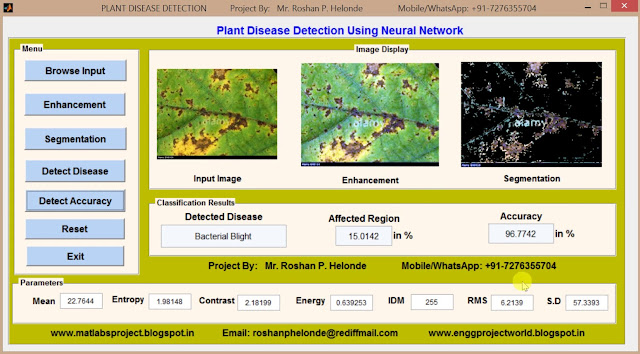ABSTRACT
Agriculture is the main backbone for most of the developing/developed countries; agriculture production itself is the main feed for ever growing populations and it is the major source of income for the rural people/farmers especially in India. In India farmers are called “the backbone of India”. The main aim of the proposed system is to detect and classify the diseases in paddy leafs. Paddy Diseases Classification comprises of two steps: first one is Detection, Extraction and Segmentation of diseases. Secondly, Feature extraction, Classification and Grade the level of disease by using Support Vector Machine (SVM) classifiers respectively. The proposed system has been experimentally tested for our own dataset and results achieved are encouraging.
PROJECT OUTPUT
PROJECT VIDEO
Contact:
Mr. Roshan P. Helonde
Mobile: +91-7276355704
WhatsApp: +91-7276355704
Email: roshanphelonde@rediffmail.com











































